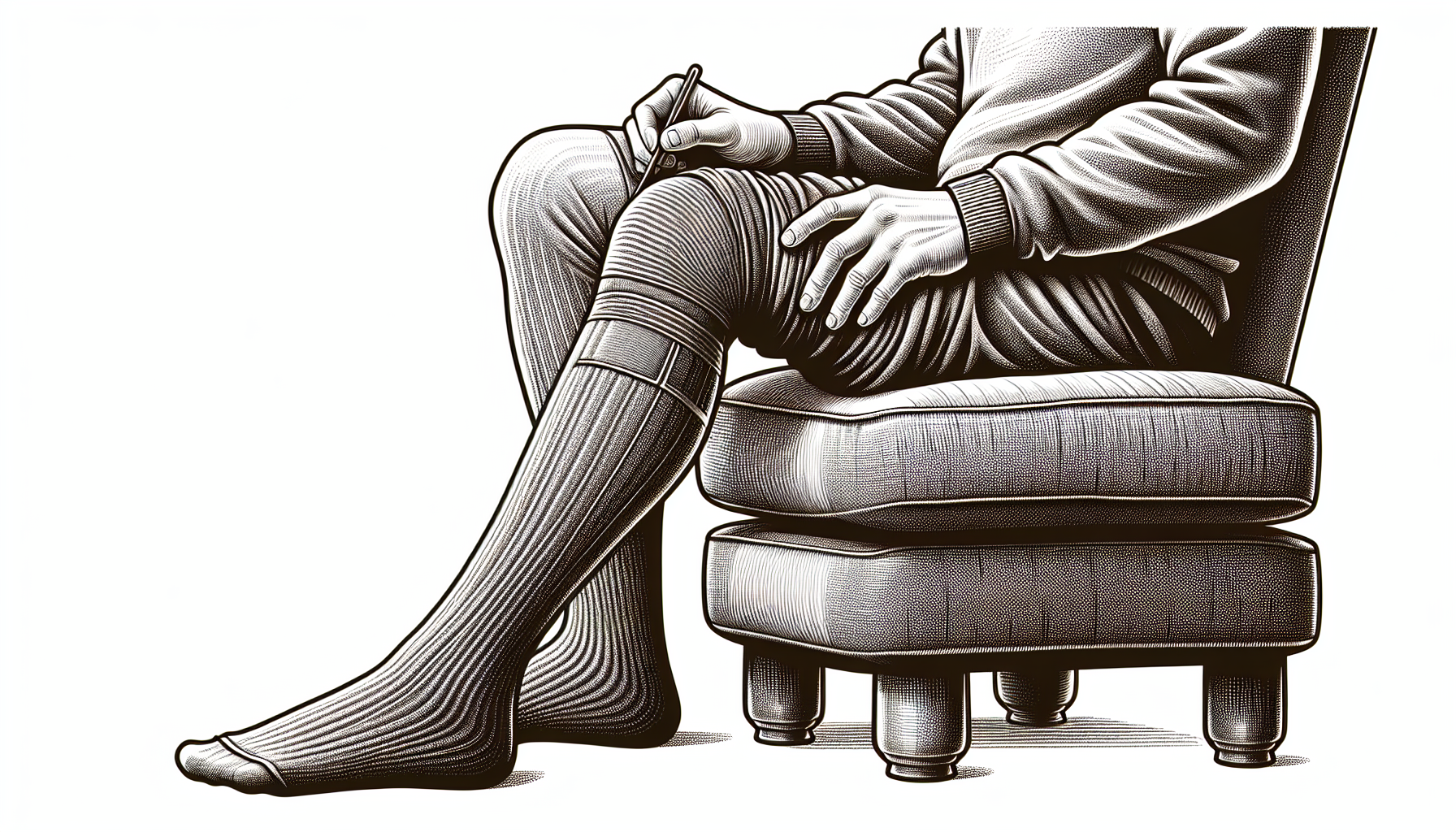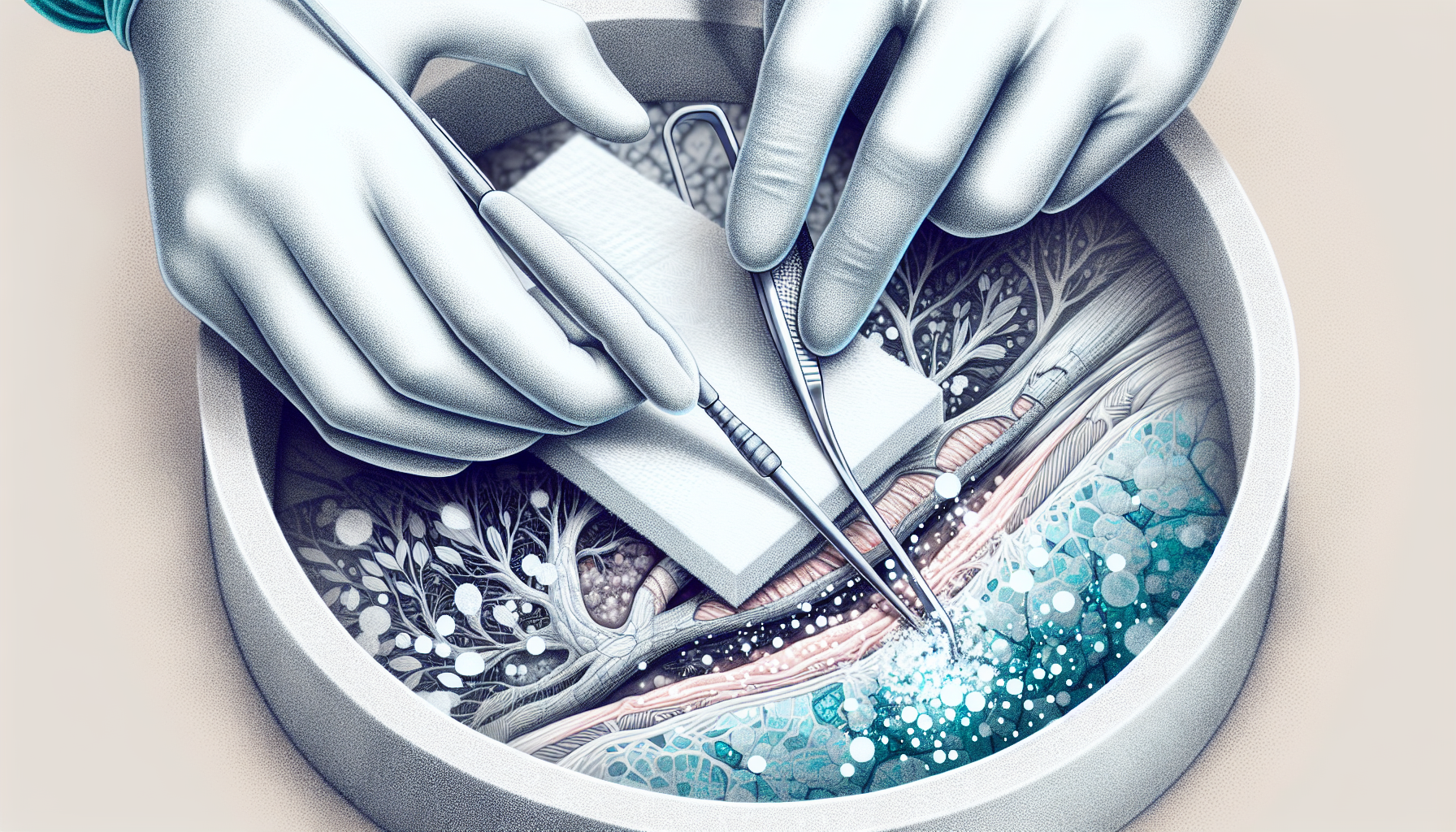Recovering from knee arthroplasty surgery? This article covers the best postoperative care tips after knee arthroplasty surgery to help you heal quickly and safely. Expect practical advice on home setup, pain management, wound care, physical therapy, and more.
Key Takeaways
- Home preparation and organization are crucial for a smooth recovery after knee arthroplasty, including creating a temporary downstairs recovery space and ensuring safe, unobstructed walkways.
- Managing pain and swelling post-surgery involves the careful use of pain medications, elevating the leg, using compression stockings, and applying ice to reduce swelling and facilitate healing.
- Effective wound care and infection prevention are vital, including keeping the incision site clean and dry, monitoring for signs of infection, and seeking immediate medical help if symptoms like increased redness or fever occur.
1 Home Preparation for Knee Arthroplasty Recovery

Before embarking on the journey with your new knee, it’s key to prepare your home for an outstanding recovery. Imagine your home as a sanctuary of healing; every corner, pathway, and room harmonized to support your convalescence. Begin by rearranging furniture to create wide, unobstructed paths, perfect for your walker’s graceful glides. Banish loose throw rugs and any trinkets that dare to clutter your path to ensure every step is secure.
Subsequently, think about the sequence of your daily activities. If your bedroom is an upstairs haven, create a temporary recovery room on the main floor, a nest that cradles your operated leg without the peril of stairs during those first few weeks after surgery. In the ballet of bathing, handrails in the bathroom become your steadfast partners, offering support and safety as you pirouette in and out of the shower, ensuring not a step is out of place.
Managing Pain and Swelling

Once your knee surgery concludes, pain and swelling management becomes paramount. Pain medication serves as a reliable aide, there to alleviate pain and steer you through the initial stages of recovery. Be mindful of the powerful performance of opioids; they are best saved for the encores of intense pain, typically in the first few scenes post-surgery. Remember, too much of a good thing can be harmful—keep a vigilant eye on the acetaminophen content to safeguard against an overdose.
Swelling is like an uninvited critic—it can overshadow your performance. Combat this by:
- Elevating your leg, letting gravity draw the swelling away, as if pulling back curtains to reveal a healing knee.
- Donning compression stockings, your personal stage crew works silently behind the scenes to reduce swelling and improve circulation.
- Applying an ice pack, a cooling encore that soothes and prepares you for the next act.
Wound Care and Infection Prevention

During recovery, the incision site plays a pivotal role in your healing process. Treat it with the reverence of a star performer—keep it clean, dry, and elegantly dressed in its bandages until it’s time to take a bow and shower safely. Be the attentive audience to your body’s cues; signs of infection like increased redness, swelling, or warmth are critical reviews that call for immediate action.
Even a seasoned star like your new knee can face the drama of infection. It’s a rare act, but when it happens, swift intervention is key. If you experience fever alongside knee pain, it’s your cue to seek the expertise of your medical team without delay. Remember, early detection is your best defense. It’s the encore that ensures the show goes on.
Physical Therapy and Exercises
As one phase concludes, another commences with physical therapy and exercises after a partial knee replacement or a total knee replacement surgery. Your physical therapist is the director of this act, guiding your movements and strengthening your knee with the precision of a maestro. From the moment the curtains rise a few hours post-surgery, this partnership is crucial for a performance that will earn rave reviews.
The stage is set for exercises that will bring strength and grace to your knee. Engage in the dance of flexion and extension, bending and straightening to the rhythm of recovery. The goal is to surpass 90 degrees within weeks, a milestone in your road to a standing ovation. And as you weave these exercises into your daily routine, visualize each movement bringing you closer to the grand finale—a full and active life.
Medication Management

In the recovery process, medication management strikes a balance between pain relief and healing. The ensemble of prescription pain medications, from opioids to blood thinners, each have their solo, but when played together, they create a symphony of well-being.
To perform at your best, take your pain medicine as directed by the conductor of your healthcare team. Pain medicines may have their side effects, like unwelcome dissonances, but taking them with a meal can soften their impact, allowing you to rest more easily and focus on the music of recovery. These medications not only help you manage your symptoms but also relieve pain effectively.
Diet and Nutrition
A balanced diet provides the sustenance required for your continued recovery. Picture your meals as a medley of proteins, vitamins, and minerals, each bite is a step towards an improved function and an active lifestyle. Like a well-tailored costume, your diet should fit perfectly with your body’s healing needs.
Hydration, the unsung hero of recovery, keeps the tempo steady. Water is the elixir that cleanses the remnants of anesthesia and the parched notes of medications. Sip it like a fine wine, savoring its role in your body’s symphony of health. And for those seeking the perfect pitch, balance your electrolytes with smarter options like Pedialyte over the sugary alternatives.
Staying Active Safely
Let’s now shift focus to a phase where maintaining activity takes precedence. Your new knee is ready for its solo, but remember, it’s a gradual crescendo, not a sudden leap to the climax. Begin with assisted walking, your trusted sidekick, ensuring each step is a calculated move toward your long-term goals.
As you pirouette from walkers to canes, embrace low-impact activities like swimming or cycling that are as gentle as a lullaby on your healing knee. Avoid the drama of high-impact actions until your doctor raises the curtain for more vigorous roles.
When you’re ready, the stage will be set for a full range of motion and an active lifestyle that’s as captivating as any performance you’ve ever given.
Managing Daily Activities
Your daily activities constitute the narrative of your life. To perform them with ease, introduce assistive devices into your cast. A raised toilet seat or a shower chair can take the lead in scenes where safety and stability are the main themes. Long-handled aids are the supporting actors, assisting with dressing without bending the knee beyond its scripted limit.
As you navigate the stage of daily life, modifications are key. A basket attached to your walker or an apron with large pockets can be the props you need to carry items effortlessly, ensuring a seamless transition from one activity to the next. To ensure a restful night, manage your liquid intake like an expert stage manager, timing it to minimize interruptions to your much-needed sleep.
Driving and Travel Considerations
Resuming driving can be likened to returning after a break. Patience is your co-star until you can safely take the wheel without the influence of opioid pain medication. Ensure your strength and reflexes are ready for the limelight once more, practicing the choreography of getting in and out of the car and mastering the pedals before the opening drive.
Travel, another storyline in your recovery script, requires the nod of approval from your healthcare provider. When it’s time to spread your wings, do so with caution, remembering the lessons of your journey and ensuring your knee is ready for the adventure.
Sleep and Rest
During quieter moments, sleep and rest serve as your comfort, always ready to aid in your primary role. Arrange your bed with pillows that elevate your leg, setting the stage for blood flow as smooth as a duet. Sleep positions are a choreographed dance, with your back as the preferred stage and your operated leg the star of the show. Incorporate ankle pumps into your routine to further support your recovery.
Balance your performance with intermissions of rest, interspersed with periods of activity. This interplay is the rhythm that leads to a full recovery, ensuring your knee’s longevity in the spotlight.
When to Seek Medical Help
The recovery process can sometimes bring unexpected turns. When symptoms of blood clots or persistent pain take the stage, it’s time to seek the guidance of your healthcare provider. Just as a director calls for a script revision, you may need to adjust your recovery plan in consultation with your medical team.
Be vigilant for signs that the storyline is veering off course—complications with the knee joint replacement or signs of infection are your cues to seek medical help without delay. Your health is the star of this show, and any deviation from a successful knee replacement surgery recovery requires immediate attention, especially when it comes to knee replacements.
Long-term Care and Lifestyle Adjustments
As you near the end of this journey, long-term care and lifestyle adjustments become critical. Maintaining a healthy weight is like fine-tuning an instrument—it ensures your knee joint performs its solo flawlessly for years to come. Embrace low-impact exercises as part of your routine, the encore that keeps your knee flexible and strong.
Continue regular check-ups with your healthcare provider, the standing ovation that celebrates the success of your total knee replacement. These visits are the curtain calls that ensure the longevity of your performance.
Summary
In the grand performance of knee arthroplasty recovery, every tip and strategy we’ve shared is a step in the choreography toward a triumphant return to an active lifestyle. Embrace these postoperative care tips as your script for a recovery that’s as smooth as the most elegant ballet. With dedication, patience, and a touch of grace, you’ll soon be taking a bow, enjoying the ovation of a life free from knee pain.
Frequently Asked Questions
How soon after knee replacement surgery can I start walking?
You can typically start walking with assistance from nurses and a walking device within a day or two after knee replacement surgery, following your surgeon’s recommendation. Starting to walk early can help in the recovery process.
Can I drive while taking opioids for pain after knee surgery?
It is not safe to drive while taking opioid pain medication after knee surgery. It is generally advisable to wait about 3 weeks after treatment to resume driving to ensure that strength and reflexes have returned to a normal state.
When is it safe to resume sexual activity after knee replacement?
It’s best to consult with your doctor regarding when it’s safe to resume sexual activity after knee replacement, as they will advise based on your pain levels, flexibility, and overall recovery progress.
What are the signs of infection I should watch out for after knee surgery?
After knee surgery, watch out for signs of infection like increased redness, swelling, warmth, or discharge from the incision. Additionally, be mindful of severe and unrelieved pain, and promptly seek medical advice if any of these symptoms occur.
How long will it take for me to fully recover from knee replacement surgery?
Full recovery from knee replacement surgery can take up to a year, but most normal activities can usually be resumed about six weeks post-surgery. Remember that recovery time is individual.





 William D. Murrell, MD
William D. Murrell, MD Thomas B. Evely, DO
Thomas B. Evely, DO Clifford Voigt, MD
Clifford Voigt, MD Karthikeyan Chinnakkannu, MD
Karthikeyan Chinnakkannu, MD Max N. Seiter, MD
Max N. Seiter, MD Demetris Delos, MD
Demetris Delos, MD Lauren M. Fabian, MD
Lauren M. Fabian, MD